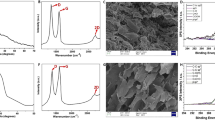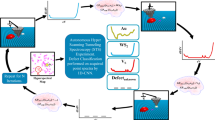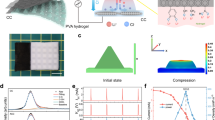Abstract
TWENTY grams of hexuronic acid, prepared by Svirbely and Szent-Györgyi, were shaken in 500 c.c. of acetone in the presence of 50 grams of anhydrous copper sulphate for twenty-four hours. After filtration, the fluid was evaporated in vacuo to one third of its volume. On addition of a double volume of petroleum ether the monoacetone derivative of hexuronic acid crystallises out in well-formed large, colourless prisms or long needles. These were dissolved in acetone and recrystallised by the addition of petroleum ether. Seventy per cent of the theoretical yield was obtained.
This is a preview of subscription content, access via your institution
Access options
Subscribe to this journal
Receive 51 print issues and online access
$199.00 per year
only $3.90 per issue
Buy this article
- Purchase on SpringerLink
- Instant access to full article PDF
Prices may be subject to local taxes which are calculated during checkout
Similar content being viewed by others
Author information
Authors and Affiliations
Rights and permissions
About this article
Cite this article
VARGHA, L. Monoacetone Hexuronic Acid. Nature 130, 847 (1932). https://doi.org/10.1038/130847b0
Issue date:
DOI: https://doi.org/10.1038/130847b0
This article is cited by
-
Preparation of 5,6-o-isopropylidene-l-ascorbic acid
Experientia (1963)
-
Identity of L-ASCORBIC Acid Formed from D-GLUCOSE by the Strawberry (Fragaria)
Nature (1961)
-
Zum papierchromatographischen Verhalten einiger Abbauprodukte des Vitamins C
Fresenius' Zeitschrift für analytische Chemie (1958)
-
Zur Kenntnis des Vitamins C
Die Naturwissenschaften (1933)
-
Das vitamin C
Ergebnisse der Physiologie und Experimentellen Pharmakologie (1933)



